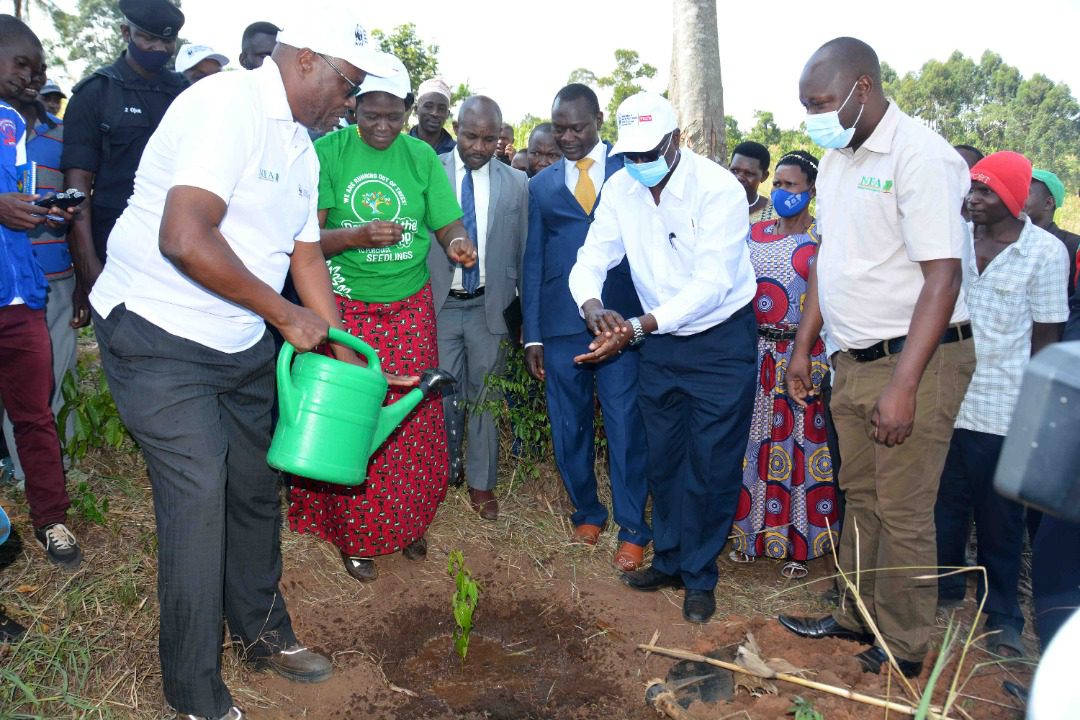
KAMPALA — World Wide Fund for Nature (WWF) Uganda has launched an ambitious cover restoration drive of the heavily degraded Kagombe and Bugoma Forest Reserves—in one of the country’s most fragile and Biodiversity-rich areas.
The ambitious 20-year-project worth (about sh14bn) is supported by the World Wide Fund for Nature Uganda with funding from VELUX Group, Denmark.
The project launched by area Member of Parliament and the finance minister, Matia Kasaija, and the state minister of environment Beatrice Anywar is aimed at regenerating/restoration of the most deforested natural forests.

The Natural Forest Regeneration for Enhanced Carbon Stocks (FRECAR) project being implemented in the Albertine Rift, an area of exceptional faunal and moderate floral endemism which spans five nations.
A biodiversity hotspot, the region boasts 6,568 plant species and 1,833 terrestrial vertebrates in its tropical moist forests—but WWF says the landscape has suffered a 66% decline in forest cover in the last two decades alone, one of the highest deforestation rates in Uganda.
Despite most of Uganda’s protected areas being concentrated here, pressure from agricultural land use, illegal timber logging and human settlement have led to significant forest degradation.
Mr. David Duli, WWF-Uganda, Country Director told reporters unsustainable agricultural use alone has led to over 70% reduction of the forest area in the Kagombe region, while more than half has been lost in Bugoma.
Duli said the much sought-after grand restoration agenda seeks increased carbon stocks in the degraded parts of the forests, improved community wellbeing, and conserved landscape biodiversity in the Bugoma-Kagome landscape, that also covers five districts including Kagadi, Kikuube, Kyegegwa, Kyenjojo, and Kibaale.
The project is also intended to have contributed towards the achievement of the 24% national projected target of the forest cover.

“In this particular site, we have a stake of 2000 hectares to restore and it has to be done with a target of fixing in 1 million metric tonnes of carbon in the plants that we are planting,” he said.
In 1991 Duli says Kagombe Forest Reserve was one of the important biodiversity reach sites in Uganda before people encroached the forest in 2021.
The project is to be implemented in phases with NFA as the lead implementing agency.
According to the project plan; the first five years will be for active implementation, five years of maintaining the planted areas, while the remaining 10 years will be for monitoring the impacts on carbon, biodiversity, community and households.

On his part, Tom Okello, Executive Director of National Forestry Authority stated that he was excited about the project that is meant to reverse the forest cover loss in the project area.
In fact, more than 60% of the forests in this region have been lost between 2005 and 2015, but said, the VELUX and WWF fund project will help reverse the trend.
Minister Kasaija asked the communities withdraw from forest reserves and pave way for restoration noting that climate change is now ‘a matter of life and death’.
“There shouldn’t be politics in this. This is a matter of life and death for ourselves, children and grandchildren and it has been handled as soon as possible,” the Minister said, adding:
“If you people don’t stop encroaching on forest Kagombe, river Musisi is going to dry up and won’t have water anymore.”

State minister Anywar called upon the community to work together with the implementers of the project and ensure that the degraded parts of Kagombe and Bugoma forest reserves are restored.
She asked the district leaders to implement the President’s directive of not using force to evict forests and wetlands encroachers but allow them to leave voluntarily.




